The process of breeding an animal can seem quite scary at first, with how many things you need to know beforehand and most importantly, with how many things can go wrong if you make one wrong move.
But luckily, there is always a clear set of steps you can take to make sure that no matter what, the process will go by smoothly and without a problem.
So, today we would like to guide you through everything you need to know about breeding hedgehogs. But why hedgehogs though?
Well, that’s because breeding hedgehogs is considered to be one of the toughest things you can do. As such, we want to make sure that as a new breeder, you know everything there is beforehand so that you don’t mess up the process in any way, shape or form.
So, in this article we will be going over everything there is to know, including how often you should breed a female hedgehog, when should you do it and how you can help them get started of course.
With all of that being said though, let’s just answer the first question that should be on your mind right about now, aka:
What Are the Risks of Breeding Hedgehogs?
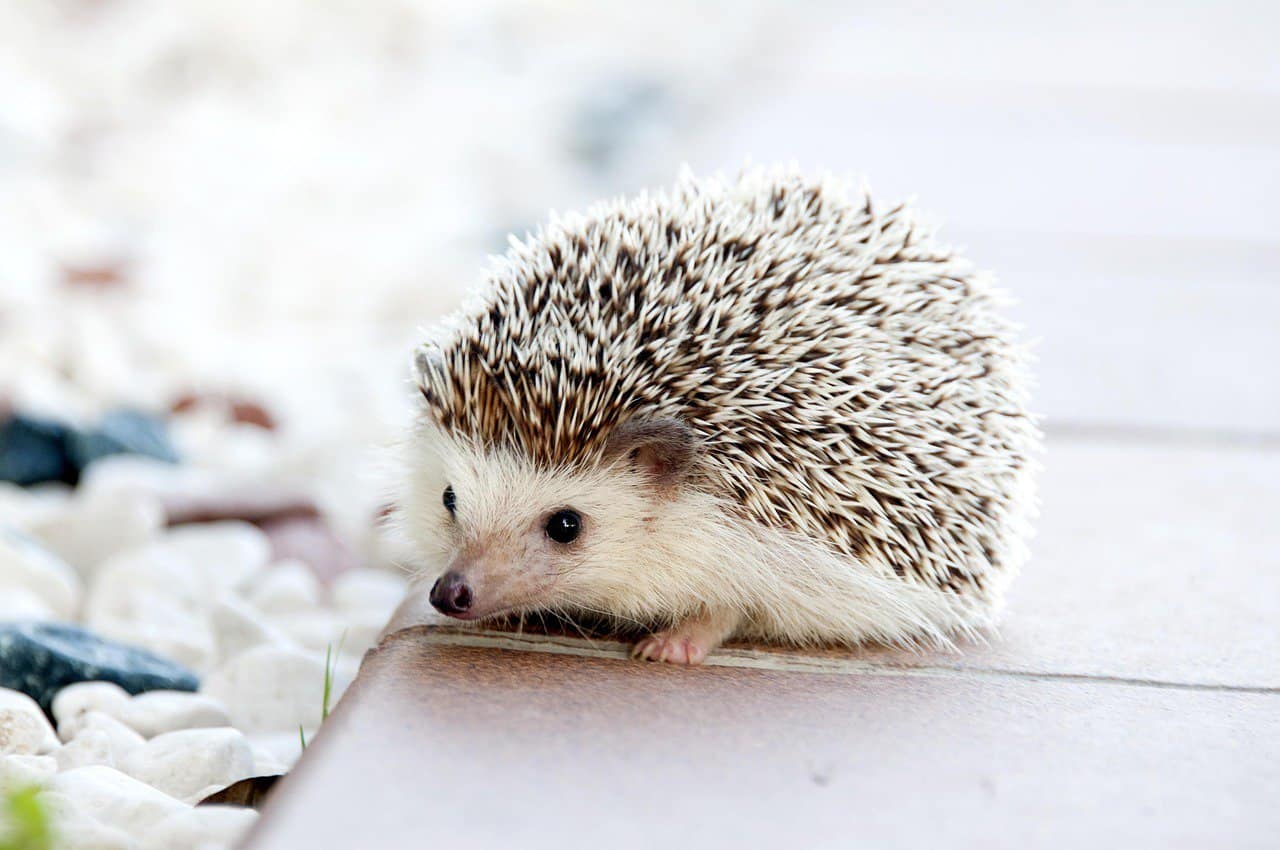
There are more than a handful of risks that you need to be aware of before you start breeding your hedgehogs, and for good reason too.
A lot of people believe that they should start breeding females as soon as they see that they are ready for the process, but this isn’t always the case.
Breeding the females when they are too young will often times result in the loss of the babies, but that’s not all.
If you happen to be breeding a female that is too young then you can also end up in quite a pinch, as the mother can die during the process or even worse so, she can end up cannibalizing her baby to survive.
If the mother hedgehog is feeling a bit stressed out then this will often times be the end result, so make sure to always keep your female hedgehog calm and happy to avoid any unnecessary tragedies.
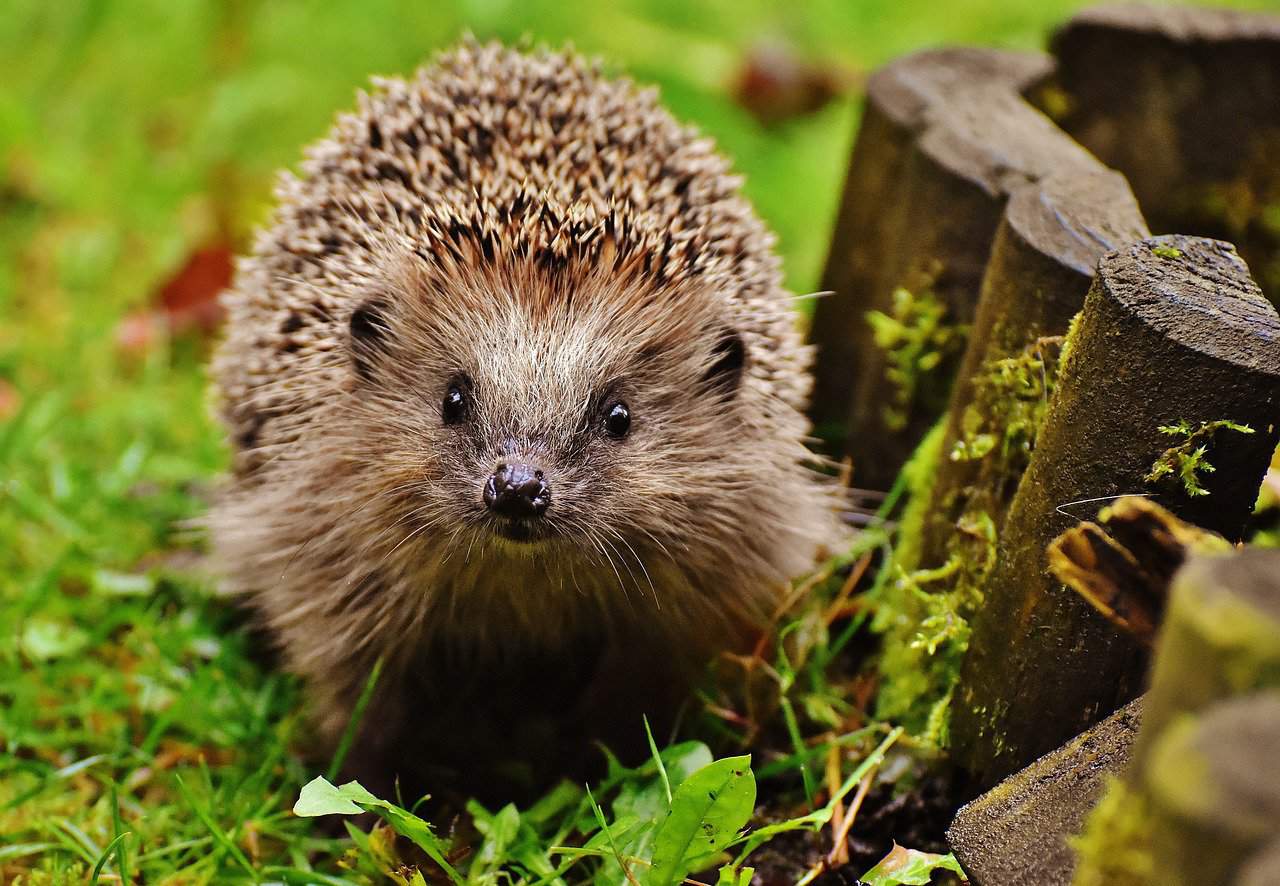
If you force out a pregnancy, the most often result will always be the loss of the mother, which will most definitely be the case for hedgehog breeding too.
So, make sure to always keep that in mind. If you desperately need a new batch of hedgehogs you can give it a try, but just know that if the female hedgehog is too young or too old, the odds of them surviving the process are significantly lower than you’d think.
On top of that, you should also keep a close eye on the litter to make sure that there isn’t all that much violence between the females and males.
In order to make sure that this won’t pose a problem, we recommend that you check in with an experienced breeder that can explain to you the many different telltale signs of this.
“Mentors” are always sought-after and appreciated in any industry, and the breeding industry is no different.
So, start looking for anyone that is willing to listen to you and ask them if they can guide you through the process before you start breeding your very own hedgehogs.
How Often Should You Breed a Female Hedgehog?
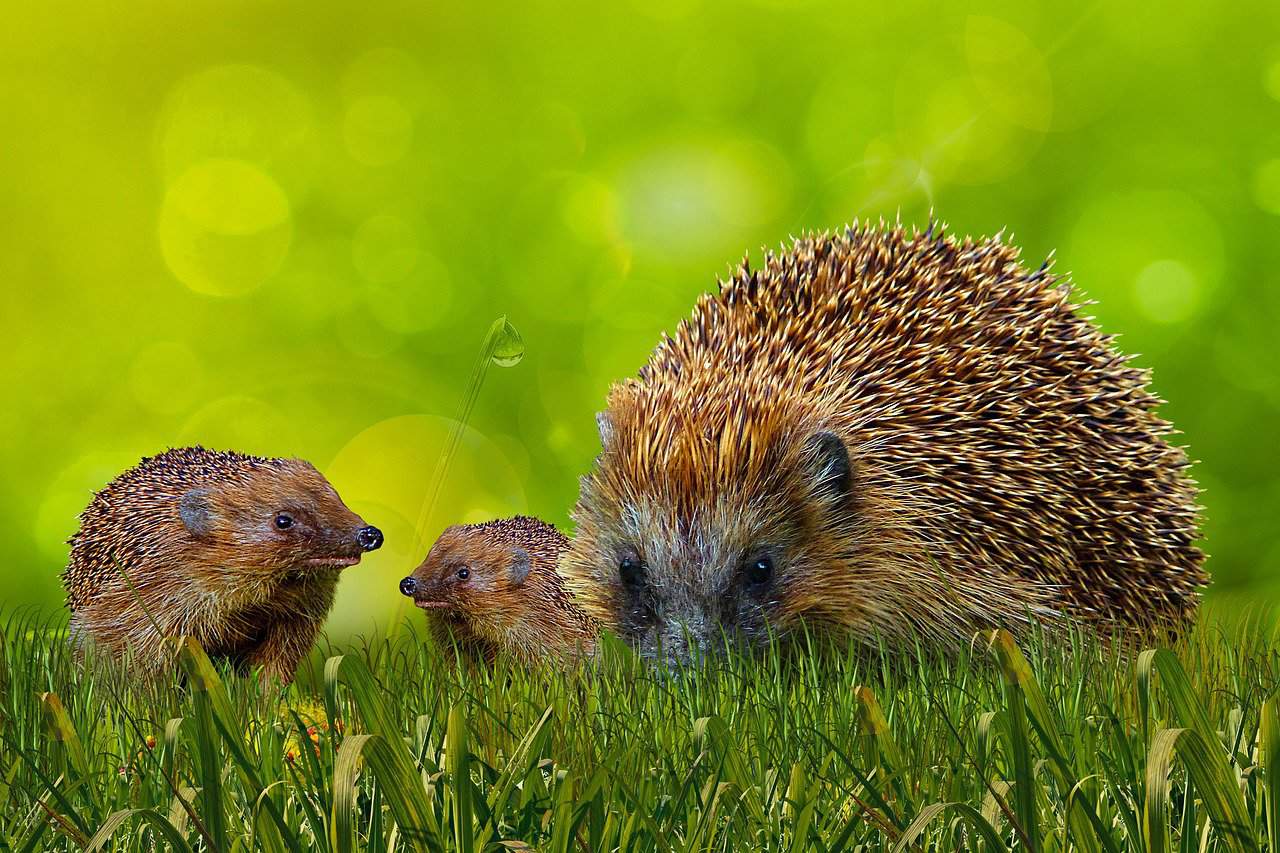
We can’t stress this enough, but you should never try to breed a female hedgehog more than three times per year. Any more than that and the odds of your mother living through the process get cut in half.
You should at the very least make sure that the mother hedgehog gets around four months between each little in order to make sure that the process goes through successfully.
If you don’t feed your female hedgehog her required nutrients or you don’t allow her to sleep as much as she needs to, she will eventually reabsorb the nutrients from her babies by cannibalizing them which is never a pretty sight.
So, always keep that in mind as you breed your hedgehogs, because for as profitable as it is to have your hedgehogs bred four to five times per year, your mama’s health will be in great danger if you decide to take this route.
When Should You Breed the Female Hedgehog?

First and foremost, when looking for the perfect hedgehog to breed, you need to look for the female that has the friendliest temperament.
A good temperament is a great indicator that they are ready to be bred, and not only that. Temperaments in hedgehogs are hereditary, which means that if you decide to breed a gentle and friendly hedgehog, the babies will also most likely be just as friendly and gentle themselves.
Besides this, you should also make sure that the females you choose to breed are physically healthy and at the very least around the right age for the process.
Females can be bred around six months or so, and while they can also be bred much later on, you should never go under than six month line.

If you do force out a breeding before this point you will most likely end up with a pair of dead hedgehogs consisting of both the mother and the babies altogether.
But at the same time, you shouldn’t wit until your female is older than twelve months of age or so, because that will most also not be good for them.
Around this time frame is when their pelvic bones start to fuse together, which in itself will make the birthing process a lot harder to get through.
In a lot of the cases, breeding your hedgehogs when their pelvic bones have already started to fuse together will result in a fatality, so avoid this at all costs.
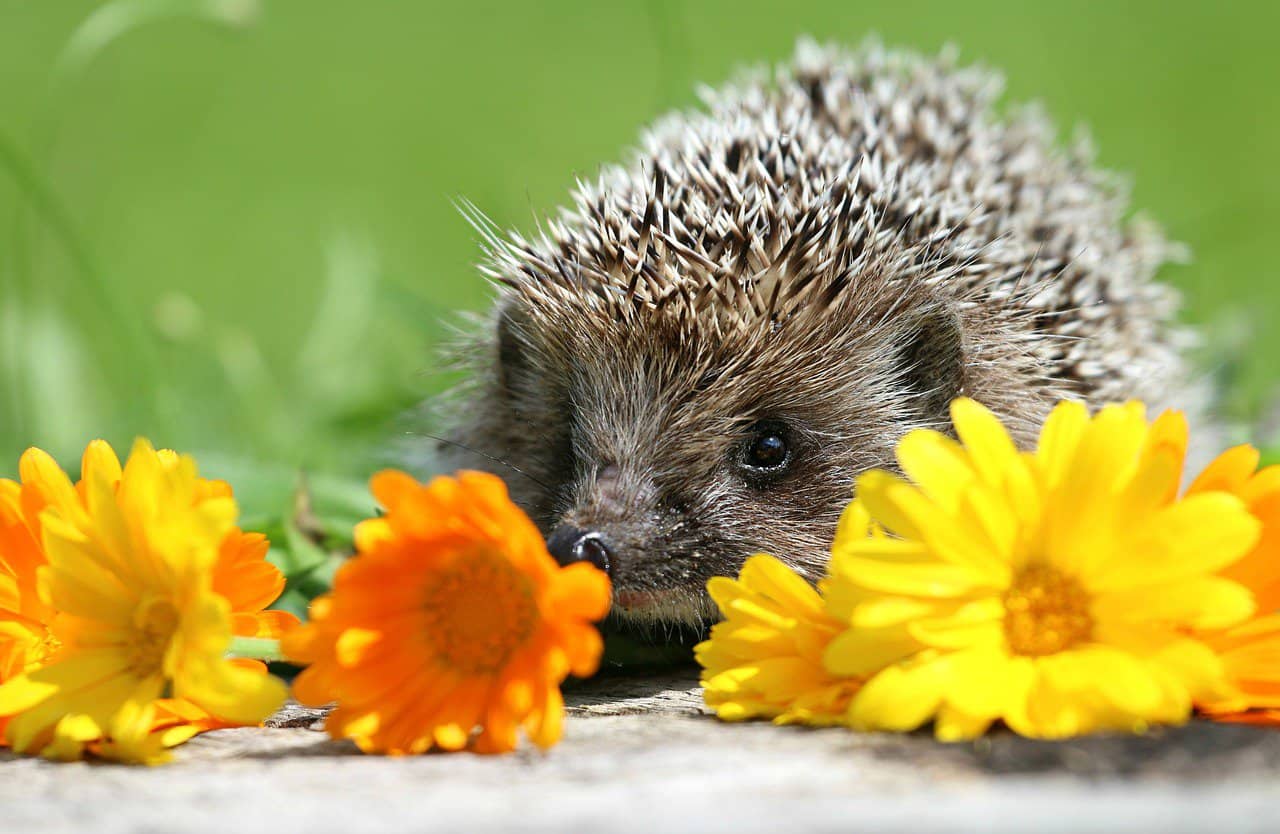
One last thing we should mention here is the fact that your female hedgehog’s weight should also be in check, because if they are too slim or too chunky for the process, the birthing process can and will most likely be fatal for them.
But how can you tell if your hedgehog is too heavy or too slim? Well, If the mother can’t even properly roll into a ball then she is too heavy.
At the same time, if her sides are sunken-in, then chances are that your hedgehog is a bit too slim to undergo the birthing process.
Your mother should also reach menopause at the ripe old age of 2 and a half or three years old or so. The closer she gets to that, the smaller her litters will be. So, make sure that you don’t breed your hedgehog past or even close to that point.
How do Hedgehogs Mate?
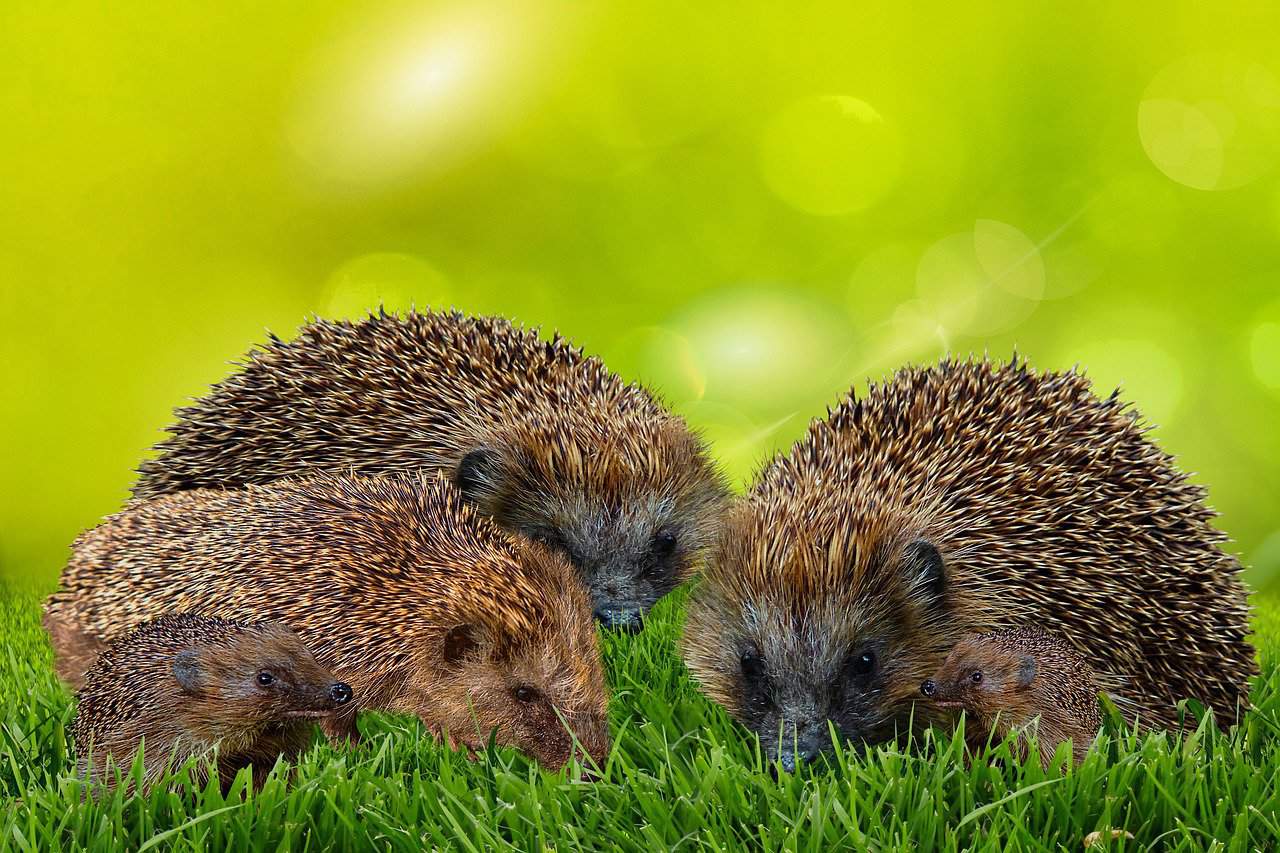
This may issue more than a few giggles from our readers, but if there is even one person that we help out by answering it then it was well worth it.
So, how exactly do hedgehogs even mate in the first place? Well, you should know that the mating process is very delicate and hard to plan out properly.
The female is the one that needs to accept the proposal of the male, as she lays down with her spine flattened as the male starts mounting her (you’re allowed to giggle).
One thing to note here is that both the males and the females tend to have multiple partners per season, so keep that in mind if you think that your pet hedgehogs will stay faithful all of their lives.
How to Make Sure Your Hedgehogs Are Healthy

This may seem like a bit of an obvious point to make, but trust us when we tell you that it is well worth looking into if you’re brand-new to hedgehog breeding.
First and foremost we should mention here that you need to look for the health of the litter as well as the health of the parents after the delivering process.
So, make sure to check in with the mothers to make sure that they don’t have any symptoms that can lead to them losing their lives later on down the line.
There are also more than a handful of diseases and illnesses that your hedgehog can contract throughout their lifetime, so you will need to make sure that everything is alright before you even get started.
Cancer, obesity, the wobbly hedgehog syndrome and pneumonia can all lead to an unsuccessful child birth, so make sure that you look out for that.
This is why we always recommend that you take your hedgehog to the vet before you start breeding them, because trust us when we tell you, this will save you a lot of time and lives if you catch on a disease before proceeding.
How to Get Your License?
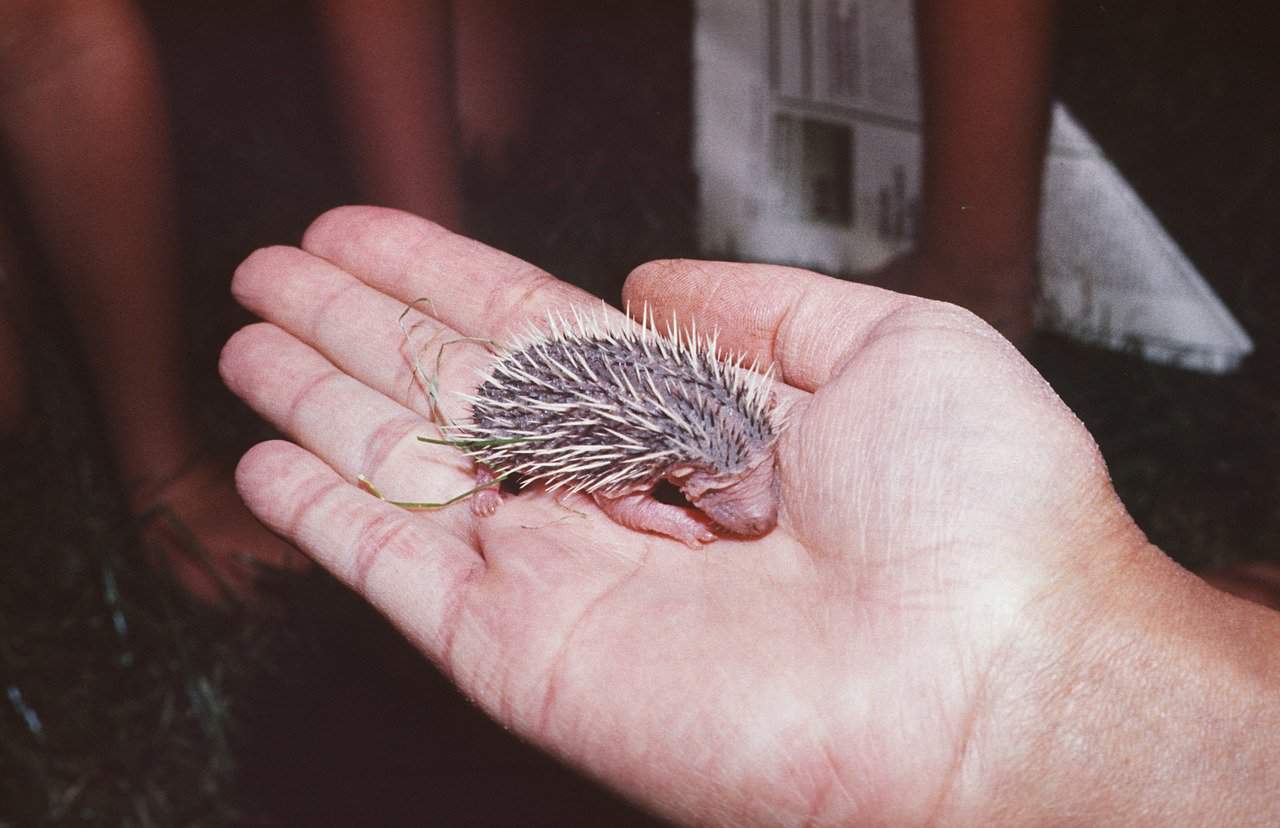
Depending on your location, you may not even need a USDA license, but if you do, keep it in mind that you will need to do your own research to find out the answer.
It all depends on the state and the level of license you want to get. In some states you will need to invest a lot more time and money in order to get the necessary license while in others you will not need to worry about any of that in the slightest.
But, even if you don’t need a license, we still recommend that you go for one simply because it is well worth it as a testament of your knowledge and skill in the field.
How Long is the Gestation Period?

The average gestation period for a hedgehog lasts only around 35 days or so, but it can also get to be around 42 days in some cases and in others it can be only 32 days.
If the female has not yet conceived, you will need to wait around one week or so past the 42-day mark. Don’t ever try to force out a mating before this point.
If you will put her back in with a mate even though she is already pregnant, she will most likely lose her pregnancy which is never a good thing.
How to Tell if your Hedgehog is Pregnant

For the most part, you should look out for the following telltale signs in order to make sure that your hedgehog is pregnant:
- Significant weight gain – Do keep in mind that a significant weight gain in general is never a good thing, unless of course, you are planning to breed your hedgehog. In this case, it is a very good indicator that your hedgehog is pregnant
- An increased appetite – If your hedgehog is suddenly eating twice the amount they would usually consume before, this could very well be a sign that your hedgehog is pregnant
- Enlarged teats and a tighter or larger abdomen – You can actually tell whether your hedgehog is pregnant or not by simply touching their belly and feeling it up yourself. Do keep in mind however that this can induce stress on the momma so proceed slowly and carefully
- The hedgehog starts undergoing nesting behaviors – If your female starts to make piles of rubble everywhere she goes and she even starts blocking the cage’s entrance with the bedding, chances are that she is most likely pregnant at this point
What You Should Know About Baby Hedgehogs?
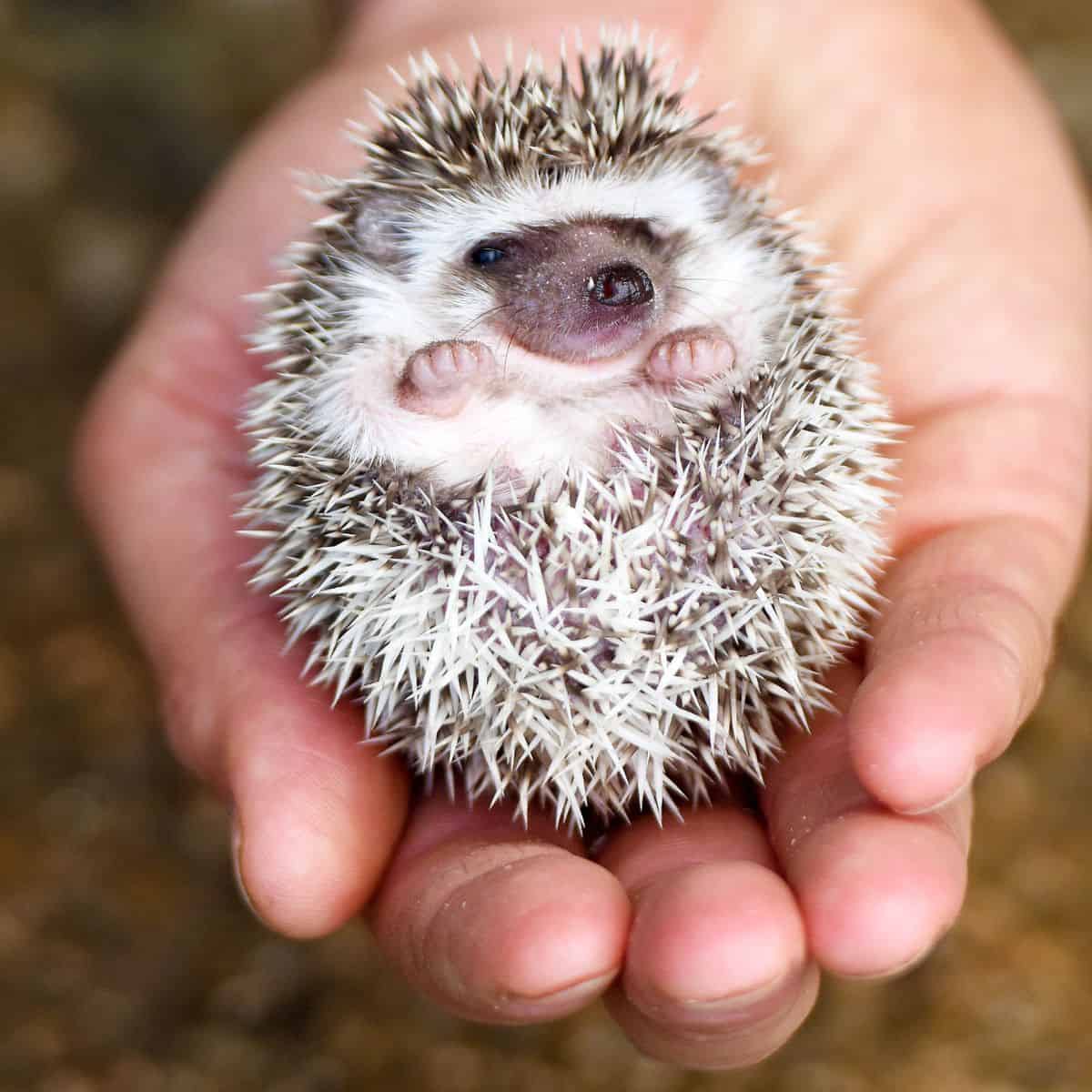
Baby hedgehogs are referred to as hoglets, and they are usually given birth to around June or July. Do try to remember though that the hoglet season usually begins around early spring and it continues all the way up until autumn for the most part.
Most litters are made up of around four to five young, but it isn’t completely unheard of to see as many as seven or as few as one or two hoglets per litter.
For the most part though, you should keep in mind that they usually only wean two or maybe three in some cases successfully.
The mother will usually be the one to kill and eat her hoglets if she is disturbed, and this can happen practically overnight.
So, make sure to keep a close eye on your litters but try not to intervene too much with the babies. If you end up touching them or leaving your scent on them the mother will no longer recognize them as her own and she will cannibalize or murder them one by one.
If disturbed, she may also start carrying her young to a new location, which in itself is not bad by any means, but you should never intervene with the process even if the babies seem like they’re in pain.

If you mess with the process, she may again just start cannibalizing her young and before long you will have to breed the hedgehogs yet again.
The hoglets can leave the nest by the time they get to be around three to four weeks old. That’s when they will start to go on foraging trips with their mother, and after around ten days or so they should start wandering off on their own.
The females can also end up with a second litter as late as October, but if you do end up breeding them so late you need to keep in mind that their odds of living through the cold season are greatly decreased.
What Are Ethical Hedgehog Breeders?

Ethical hedgehog breeders are reputable masters at their craft that have all the credentials to undergo the process.
They know how to keep their hedgehogs free from defects and they always provide you with all of the documents that you need in order to make sure that you brought a healthy and strong hedgehog home.
They are usually the most expensive option on the market, and not only that but they are also a lot harder to come by since not every city out there has an ethical hedgehog breeder on the ready.
Ethical hedgehog breeders also tend to be the most knowledgeable and trusted mentors out there, so if you want to learn the ins and outs to hedgehog breeding, this may be the best option for you.
What Are Backyard and Hobby Breeders?

While there are a lot of breeders out there that keep their pedigrees in order, there are also a lot of them out there that don’t want to invest the money or the time for them.
These breeders usually just do the job for money or for fun. These are referred to as backyard and hobby breeders, and they are a lot easier to come by than ethical hedgehog breeders are.
They almost never have a family history of disease for the hedgehog and they usually advertise their craft on different websites such as Facebook Marketplace and Craigslist.
Getting a hedgehog from one of these backyard or hobby breeders is a bit of a gamble as they usually do come with their fair share of defects which you will need to worry about later on down the line.
What Are Unethical Hedgehog Breeders?

Unethical breeders are the people that specifically breed different hedgehogs to get a certain desired pigment. The reason as to why this is a problem is because often times, they prioritize getting the desired pigments or species over actually producing healthy hedgehogs.
Often times they will breed cousins to achieve a certain pigment and in most cases, they also don’t provide you with the family paperwork because they don’t want to share their unethical decisions with you.
They will even withhold information a lot of the time by selling you baby hedgehogs that come with health defects, so always remember that when browsing for a certain pigment or species online.
If you can choose between an unethical and an ethical breeder, always opt for the ethical one because supporting unethical hedgehog breeders will only lead to more hedgehog lives being lost in the future.
Conclusion

Breeding hedgehogs is definitely not the easiest thing to do, not by a longshot. This is why we always recommend that you check in with a professional before you start getting into the process.
But if you do want to just get on with it and try your luck, you can always just follow our tips and tricks here and hopefully you’ll be a proud hedgehog grandma/grandpa in no time.
Contents
- What Are the Risks of Breeding Hedgehogs?
- How Often Should You Breed a Female Hedgehog?
- When Should You Breed the Female Hedgehog?
- How do Hedgehogs Mate?
- How to Make Sure Your Hedgehogs Are Healthy
- How to Get Your License?
- How Long is the Gestation Period?
- How to Tell if your Hedgehog is Pregnant
- What You Should Know About Baby Hedgehogs?
- What Are Ethical Hedgehog Breeders?
- What Are Backyard and Hobby Breeders?
- What Are Unethical Hedgehog Breeders?










